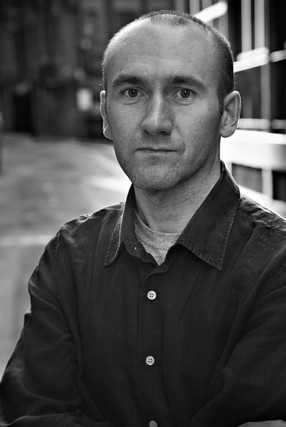It sounds like the kind of story that could only exist in fiction. An Indian man in his late 40s, part martial artist, part journalist and fully committed to breaking outlandish world records such as “the most number of concrete blocks broken on the groin at once”, sets himself a new target: to have 50 baseball bats broken over his body.
Only this strange protagonist in Booker-shortlisted author Stephen Kelman’s remarkable new novel, Man on Fire, is largely real.
Bibhuti Bhushan Nayak does exist – in fact he and Kelman, a British author in his late 30s, struck up an unlikely friendship over email many years ago.
“Genuinely, he changed my life,” says Kelman. “He’s such an engaging, inspiring character.”
In fact, Kelman began work on Man On Fire before his highly praised debut, Pigeon English (2011), his moving story of a Ghanaian child in an English inner-city housing estate who tries to solve a murder.
While scratching around for ideas for screenplays, Kelman happened to come across the 2008 documentary TV series Paul Merton In India. In it, British comedian Merton was both bemused and in awe after he was invited to repeatedly kick Nayak in the groin.
“I was instinctively drawn to Nayak on a deep level,” Kelman says. “Here was a guy who, on the face of it, was doing something so bizarre and outlandish, and seemed to be deriving some kind of enjoyment from it. And yet, far from thinking he’s a clown, I wanted to understand what motivated him, what made him tick. I wanted to find the dignity and nobility behind what he does.”
It’s this search for dignity and humanity that is at the beating heart of Man on Fire.
Another author might well have opted to write a straight biography – after all, Nayak lived on the streets when he arrived in Mumbai and ended up a minor celebrity.
But Kelman felt that by taking a real-life story and then speculating further, he could find a deeper and more universal truth about the human condition.
“And Nayak was absolutely fine with that from the start,” he says. “I promised that within a fictional story I would represent him truthfully and honourably, which was a leap of faith for him, not least because I hadn’t had anything published at that point. Nayak ‘introspected’, as he likes to say, and agreed. And I’m so glad he did.”
In the novel, Nayak is attempting to beat pain through “breathing, meditation, training, diet, and the grace of the Almighty”. The reason he attempts these records, he says, is to tell the people that “if they endure the pain they will reach the happiness that comes after”.
He tells this to John Lock, a 60-year-old Englishman who flees the drudgery of life in his native country to help Nayak achieve his latest record. This is where the fiction of the story is most apparent – although Kelman says it was heavily influenced by a few anguished months of his life during which his brother died of cancer and his father was diagnosed with the disease.
“All the characters in the book are in some way trying to immortalise themselves, make an imprint on the world,” he says.
“John lives an unfulfilled life where he hasn’t taken any chances and therefore hasn’t achieved anything remarkable. When he finds out his days might be numbered, he panics, so he sets about helping Nayak.
“As for Nayak, he told me that if you’re Indian, you’re doomed to being obsolete and overlooked, fated to be anonymous in a country of a billion-plus people where you’re only really respected if you’re a cricketer or a Bollywood actor.
“So there are people looking for recognition and acknowledgement, which is where record breaking comes in – it’s a democratic way of rising above the crowd.”
Yet, Nayak never attempts any of these outlandish records simply for 15 minutes of fame. With his background in martial arts, physical fitness and meditation, he’s serious about sharing his philosophy with his community at large and ensuring that he has a positive effect on the people around him.
“He’s an activist in every sense of the word,” says Kelman.
All of which will make the novel’s reception in India interesting to see, given that Man on Fire is by a white, thirtysomething author from Luton in England.
There are certainly no grounds for concern that there might be any caricaturing at play here – to make completely sure of that, Kelman forwarded his and Nayak’s email conversations to an editor in India.
“She read them and said: ‘I get it, he is exactly as he is on the page,’” he says with a laugh.
And as for Nayak himself?
“Well, waiting for his response to the final draft was awful. I was terrified,” says Kelman. “And then he sent me a brief email saying: ‘Love it. Too emotional to talk.’”
Which, essentially, is just about the most accurate six-word review you’re likely to see this summer.


